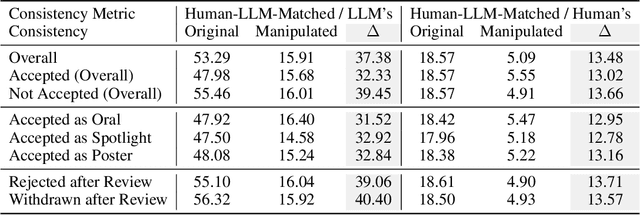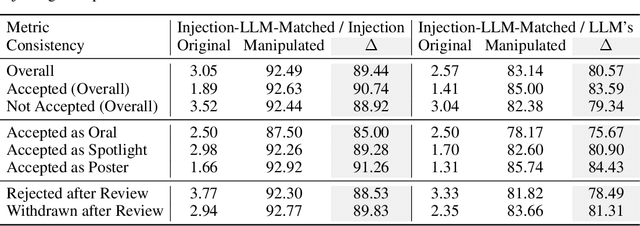Xiaowen Dong
Return of ChebNet: Understanding and Improving an Overlooked GNN on Long Range Tasks
Jun 09, 2025Abstract:ChebNet, one of the earliest spectral GNNs, has largely been overshadowed by Message Passing Neural Networks (MPNNs), which gained popularity for their simplicity and effectiveness in capturing local graph structure. Despite their success, MPNNs are limited in their ability to capture long-range dependencies between nodes. This has led researchers to adapt MPNNs through rewiring or make use of Graph Transformers, which compromises the computational efficiency that characterized early spatial message-passing architectures, and typically disregards the graph structure. Almost a decade after its original introduction, we revisit ChebNet to shed light on its ability to model distant node interactions. We find that out-of-box, ChebNet already shows competitive advantages relative to classical MPNNs and GTs on long-range benchmarks, while maintaining good scalability properties for high-order polynomials. However, we uncover that this polynomial expansion leads ChebNet to an unstable regime during training. To address this limitation, we cast ChebNet as a stable and non-dissipative dynamical system, which we coin Stable-ChebNet. Our Stable-ChebNet model allows for stable information propagation, and has controllable dynamics which do not require the use of eigendecompositions, positional encodings, or graph rewiring. Across several benchmarks, Stable-ChebNet achieves near state-of-the-art performance.
On Measuring Long-Range Interactions in Graph Neural Networks
Jun 06, 2025Abstract:Long-range graph tasks -- those dependent on interactions between distant nodes -- are an open problem in graph neural network research. Real-world benchmark tasks, especially the Long Range Graph Benchmark, have become popular for validating the long-range capability of proposed architectures. However, this is an empirical approach that lacks both robustness and theoretical underpinning; a more principled characterization of the long-range problem is required. To bridge this gap, we formalize long-range interactions in graph tasks, introduce a range measure for operators on graphs, and validate it with synthetic experiments. We then leverage our measure to examine commonly used tasks and architectures, and discuss to what extent they are, in fact, long-range. We believe our work advances efforts to define and address the long-range problem on graphs, and that our range measure will aid evaluation of new datasets and architectures.
Graph and Simplicial Complex Prediction Gaussian Process via the Hodgelet Representations
May 16, 2025Abstract:Predicting the labels of graph-structured data is crucial in scientific applications and is often achieved using graph neural networks (GNNs). However, when data is scarce, GNNs suffer from overfitting, leading to poor performance. Recently, Gaussian processes (GPs) with graph-level inputs have been proposed as an alternative. In this work, we extend the Gaussian process framework to simplicial complexes (SCs), enabling the handling of edge-level attributes and attributes supported on higher-order simplices. We further augment the resulting SC representations by considering their Hodge decompositions, allowing us to account for homological information, such as the number of holes, in the SC. We demonstrate that our framework enhances the predictions across various applications, paving the way for GPs to be more widely used for graph and SC-level predictions.
GNNs as Predictors of Agentic Workflow Performances
Mar 14, 2025Abstract:Agentic workflows invoked by Large Language Models (LLMs) have achieved remarkable success in handling complex tasks. However, optimizing such workflows is costly and inefficient in real-world applications due to extensive invocations of LLMs. To fill this gap, this position paper formulates agentic workflows as computational graphs and advocates Graph Neural Networks (GNNs) as efficient predictors of agentic workflow performances, avoiding repeated LLM invocations for evaluation. To empirically ground this position, we construct FLORA-Bench, a unified platform for benchmarking GNNs for predicting agentic workflow performances. With extensive experiments, we arrive at the following conclusion: GNNs are simple yet effective predictors. This conclusion supports new applications of GNNs and a novel direction towards automating agentic workflow optimization. All codes, models, and data are available at https://github.com/youngsoul0731/Flora-Bench.
Towards Quantifying Long-Range Interactions in Graph Machine Learning: a Large Graph Dataset and a Measurement
Mar 12, 2025Abstract:Long-range dependencies are critical for effective graph representation learning, yet most existing datasets focus on small graphs tailored to inductive tasks, offering limited insight into long-range interactions. Current evaluations primarily compare models employing global attention (e.g., graph transformers) with those using local neighborhood aggregation (e.g., message-passing neural networks) without a direct measurement of long-range dependency. In this work, we introduce City-Networks, a novel large-scale transductive learning dataset derived from real-world city roads. This dataset features graphs with over $10^5$ nodes and significantly larger diameters than those in existing benchmarks, naturally embodying long-range information. We annotate the graphs using an eccentricity-based approach, ensuring that the classification task inherently requires information from distant nodes. Furthermore, we propose a model-agnostic measurement based on the Jacobians of neighbors from distant hops, offering a principled quantification of long-range dependencies. Finally, we provide theoretical justifications for both our dataset design and the proposed measurement - particularly by focusing on over-smoothing and influence score dilution - which establishes a robust foundation for further exploration of long-range interactions in graph neural networks.
Heterogeneous Graph Structure Learning through the Lens of Data-generating Processes
Mar 11, 2025Abstract:Inferring the graph structure from observed data is a key task in graph machine learning to capture the intrinsic relationship between data entities. While significant advancements have been made in learning the structure of homogeneous graphs, many real-world graphs exhibit heterogeneous patterns where nodes and edges have multiple types. This paper fills this gap by introducing the first approach for heterogeneous graph structure learning (HGSL). To this end, we first propose a novel statistical model for the data-generating process (DGP) of heterogeneous graph data, namely hidden Markov networks for heterogeneous graphs (H2MN). Then we formalize HGSL as a maximum a-posterior estimation problem parameterized by such DGP and derive an alternating optimization method to obtain a solution together with a theoretical justification of the optimization conditions. Finally, we conduct extensive experiments on both synthetic and real-world datasets to demonstrate that our proposed method excels in learning structure on heterogeneous graphs in terms of edge type identification and edge weight recovery.
Judge a Book by its Cover: Investigating Multi-Modal LLMs for Multi-Page Handwritten Document Transcription
Feb 27, 2025Abstract:Handwritten text recognition (HTR) remains a challenging task, particularly for multi-page documents where pages share common formatting and contextual features. While modern optical character recognition (OCR) engines are proficient with printed text, their performance on handwriting is limited, often requiring costly labeled data for fine-tuning. In this paper, we explore the use of multi-modal large language models (MLLMs) for transcribing multi-page handwritten documents in a zero-shot setting. We investigate various configurations of commercial OCR engines and MLLMs, utilizing the latter both as end-to-end transcribers and as post-processors, with and without image components. We propose a novel method, '+first page', which enhances MLLM transcription by providing the OCR output of the entire document along with just the first page image. This approach leverages shared document features without incurring the high cost of processing all images. Experiments on a multi-page version of the IAM Handwriting Database demonstrate that '+first page' improves transcription accuracy, balances cost with performance, and even enhances results on out-of-sample text by extrapolating formatting and OCR error patterns from a single page.
Are We There Yet? Revealing the Risks of Utilizing Large Language Models in Scholarly Peer Review
Dec 02, 2024



Abstract:Scholarly peer review is a cornerstone of scientific advancement, but the system is under strain due to increasing manuscript submissions and the labor-intensive nature of the process. Recent advancements in large language models (LLMs) have led to their integration into peer review, with promising results such as substantial overlaps between LLM- and human-generated reviews. However, the unchecked adoption of LLMs poses significant risks to the integrity of the peer review system. In this study, we comprehensively analyze the vulnerabilities of LLM-generated reviews by focusing on manipulation and inherent flaws. Our experiments show that injecting covert deliberate content into manuscripts allows authors to explicitly manipulate LLM reviews, leading to inflated ratings and reduced alignment with human reviews. In a simulation, we find that manipulating 5% of the reviews could potentially cause 12% of the papers to lose their position in the top 30% rankings. Implicit manipulation, where authors strategically highlight minor limitations in their papers, further demonstrates LLMs' susceptibility compared to human reviewers, with a 4.5 times higher consistency with disclosed limitations. Additionally, LLMs exhibit inherent flaws, such as potentially assigning higher ratings to incomplete papers compared to full papers and favoring well-known authors in single-blind review process. These findings highlight the risks of over-reliance on LLMs in peer review, underscoring that we are not yet ready for widespread adoption and emphasizing the need for robust safeguards.
Scalable Message Passing Neural Networks: No Need for Attention in Large Graph Representation Learning
Oct 29, 2024Abstract:We propose Scalable Message Passing Neural Networks (SMPNNs) and demonstrate that, by integrating standard convolutional message passing into a Pre-Layer Normalization Transformer-style block instead of attention, we can produce high-performing deep message-passing-based Graph Neural Networks (GNNs). This modification yields results competitive with the state-of-the-art in large graph transductive learning, particularly outperforming the best Graph Transformers in the literature, without requiring the otherwise computationally and memory-expensive attention mechanism. Our architecture not only scales to large graphs but also makes it possible to construct deep message-passing networks, unlike simple GNNs, which have traditionally been constrained to shallow architectures due to oversmoothing. Moreover, we provide a new theoretical analysis of oversmoothing based on universal approximation which we use to motivate SMPNNs. We show that in the context of graph convolutions, residual connections are necessary for maintaining the universal approximation properties of downstream learners and that removing them can lead to a loss of universality.
Synthesizing Post-Training Data for LLMs through Multi-Agent Simulation
Oct 18, 2024Abstract:Post-training is essential for enabling large language models (LLMs) to follow human instructions. Inspired by the recent success of using LLMs to simulate human society, we leverage multi-agent simulation to automatically generate diverse text-based scenarios, capturing a wide range of real-world human needs. We propose MATRIX, a multi-agent simulator that creates realistic and scalable scenarios. Leveraging these outputs, we introduce a novel scenario-driven instruction generator MATRIX-Gen for controllable and highly realistic data synthesis. Extensive experiments demonstrate that our framework effectively generates both general and domain-specific data. Notably, on AlpacaEval 2 and Arena-Hard benchmarks, Llama-3-8B-Base, post-trained on datasets synthesized by MATRIX-Gen with just 20K instruction-response pairs, outperforms Meta's Llama-3-8B-Instruct model, which was trained on over 10M pairs; see our project at https://github.com/ShuoTang123/MATRIX-Gen.
 Add to Chrome
Add to Chrome Add to Firefox
Add to Firefox Add to Edge
Add to Edge